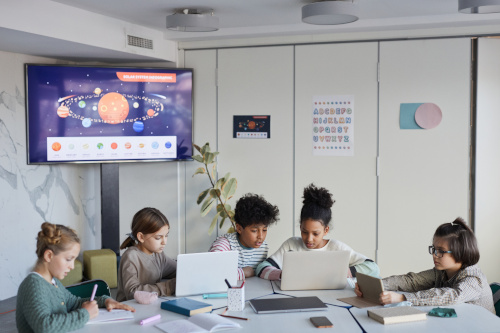In 2020, the World Economic Forum released a list of the most sought-after skills for the jobs of tomorrow. Among them were a number of surprising entries such as creativity, coordinating with others, emotional intelligence, and service orientation. At least, they were surprising if you weren’t an educator. For those of us who spent the last year teaching through a pandemic, the necessity of social-emotional learning (SEL) has been only too apparent. After all, what good is a knowledge of STEM if you don’t have the ability to recognize and manage your own emotions?
As educators, we know all too well how important social-emotional learning is to a student’s overall development. Science, math, and reading are vital subjects, but empathy, self-awareness, and responsible-decision-making are what allow someone to apply those subjects in ways that make the world a better place.
But with so many standards and subjects competing for our attention, how do we make space for effective SEL in the classroom? Well, it starts with the right activities. Here are just a few engaging lessons that can make a huge impact on students’ emotional growth:
The Marshmallow Experiment: In a 1972 experiment at Stanford University, young children were offered a marshmallow. They could eat it right away, or they could wait 15 minutes for the proctor to return. If they waited, they would get two marshmallows. The study followed the students and found that the ones that could wait for the second marshmallow were more likely to be better students, have more friends, and stay physically healthy. Try recreating this experiment with your own students to highlight self-management and the difficulties of delayed gratification.
Scout vs Soldier: Use the slideshow Agree to Disagree to highlight how different people see different things in the same image. Then watch the TED Talk Why you think you’re right — even if you’re wrong (11:37) to learn about solider vs. scout mindset. Encourage students to develop a scout mindset. Role play using the soldier and scout mindsets for a variety of topics, all the while showing students that a scout mindset requires them to be curious, open, and self-aware.
The Gardener’s Son: Play the first 2:07 seconds of A Short History of Humans and Germs to learn about Jenner’s testing of the first vaccine on his gardener’s son. (Note: the second half of the video addresses how germs continue to evolve, but it was created before COVID-19, so feels a bit dated.) Engage students in a discussion about this controversial topic to develop their social awareness. Also discuss how we can use this story to make responsible decisions. As students discuss, help them improve their relationship skills.
The Baboon’s Dilemma: Show students The Baboons’ Dilemma video or walk through the Slideshow with them. Model how to play five rounds of the game, then distribute the Baboons’ Dilemma Score Sheet and allow students to pair up to play. Students will play five rounds with each partner and will play with a total of five partners, making 25 rounds all together. After students have finished, have them add up their scores and reveal the big secret: if they had cooperated every time, each student would have caught 75 fish. But in almost every classroom that has played this game, NO ONE catches 75 fish! Looking out for yourself doesn’t just hurt the group — it hurts YOU! It’s an ideal activity for demonstrating the importance of reasonable decision-making.
By implementing activities that foster both critical thought and emotional growth, we can give students the tools they need to develop into healthy, capable adults. These are the skills they will carry with them throughout their lifetime, not just in their careers but in their relationships as well.
Don’t neglect opportunities for SEL in your classroom. It’s through these opportunities that students gain the creativity, compassion, and grit to succeed.
- How digital tools and AI can enhance social studies - April 23, 2024
- Using universal screening to improve student well-being - April 22, 2024
- 3 ways to avoid summer learning loss - April 19, 2024


